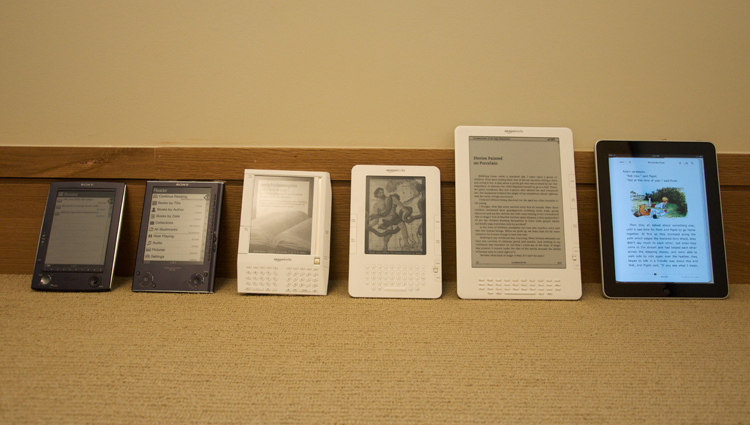Thin Power Source For Thinner Computers

Image credits: John Blyberg via Wikimedia Commons
(Inside Science) -- Thin electronic readers such as Amazon's Kindle are designed to mimic the look of ink on paper. But the newspapers of the future may do an even better job by spraying electronics directly onto actual sheets of paper -- thanks to scientists at Stanford University in Palo Alto, Calif., who have developed a technique for storing energy on paper.
Inkjet printing, used in producing countless documents on paper, can also be used to produce flat electronic components on paper. Transistors, sensors, and even radio-sensitive identification tags are routinely printed on this "e-paper".
The new energy storage technique could provide a power source for such components in all-paper electronic products, such as credit-card-sized papers that can perform calculations and perform scientific measurements like sensing humidity or pressure.
“We have integrated electronic components and energy storage into a single sheet of ordinary commercial paper with a simple printing method for the first time,” says Yi Cui, one of the Stanford scientists. With this advance, one part of a single page can be used to power electronic activities on another part of the same sheet.
This is not the first time energy has been stored in thin materials such as cloth and cellulose. Previously, the Stanford researchers were able to make a form of high-quality paper that was conducted electricity. Then they sprayed it with ink containing carbon nanotubes, tiny cylinders of carbon thousands of times thinner than a human hair.
Their latest innovation is to spray the nanotubes onto the two sides of a single sheet of cheap, commercial paper similar to what we use at home or in the office. Energy injected from the edge of the paper get stored in the nanotubes. The nanotubes, with the single sheet of paper in between, make a capacitor, a key component in electronics that stores energy by separating positive and negative charges.
Yi Cui and his colleagues Liangbing Hu and Hui Wu recently published their work in the journal Applied Physics Letters.
They say that they can store about 4 joules of energy on a business-card-sized piece of paper. What this means is that a tiny electronic device printed onto a sheet of paper -- say, a sensor or tiny information-processor needing about a milli-watt of power -- could run for more than an hour with the energy stored on the same page.
The energy-storage patterns stay put even if the page is rubbed. The energy-containing sheets can be printed out on long rolls of paper as if they were newspapers.
Note: The journal Applied Physics Letters is published by the American Institute of Physics, which supports Inside Science News Service.

